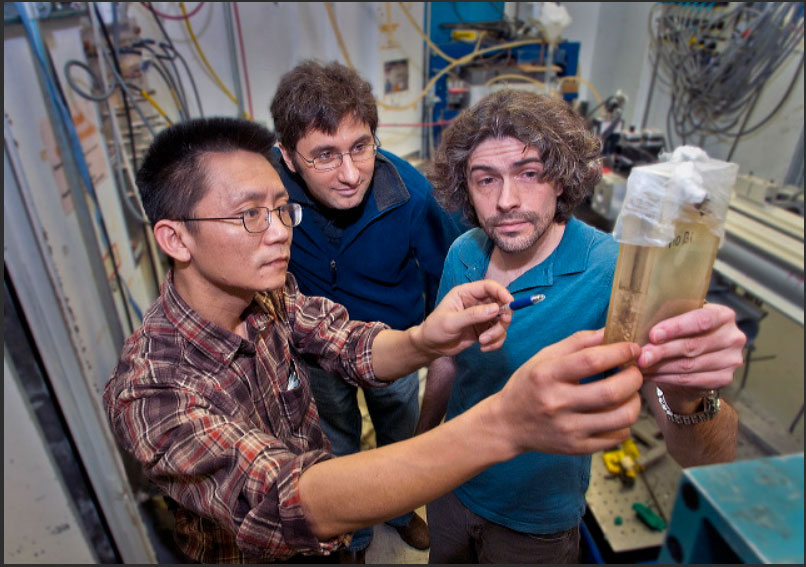The press office at Brookhaven National Lab did a nice story about our research to study why batteries fail and what “failure” even means from a materials science perspective. Batteries are designed to be good at providing power, but unfortunately that makes it difficult to see inside them and understanding how the reaction rate, potential field, and concentrations look at any given time. Consider this: a battery might cycle, charging and discharging, perfectly normally for a year, and then suddenly “fail.” What caused that failure to occur? A slow change over time? Some sudden trigger? Something in between?
My colleagues Can Erdonmez (BNL), Dan Steingart (Princeton), and I have been designing experiments cycling alkaline batteries under several different conditions while viewing their material compositions using beamline X17B1 at the National Synchrotron Light Source. Some batteries are monitored under normal operating conditions. Other batteries are aged. And some undergo extreme conditions such as extremely high rates. You definitely see a lot of interesting things happen to the battery active material over time as a function of location in the cell. It’s well known that at high current the material nearest to the battery separator will shoulder the majority of the reaction, but now, using this powerful tool, we can observe this happening directly in a real battery.
I’ll post more on this after we publish some of the results. In the meantime we have some conference talks scheduled.

